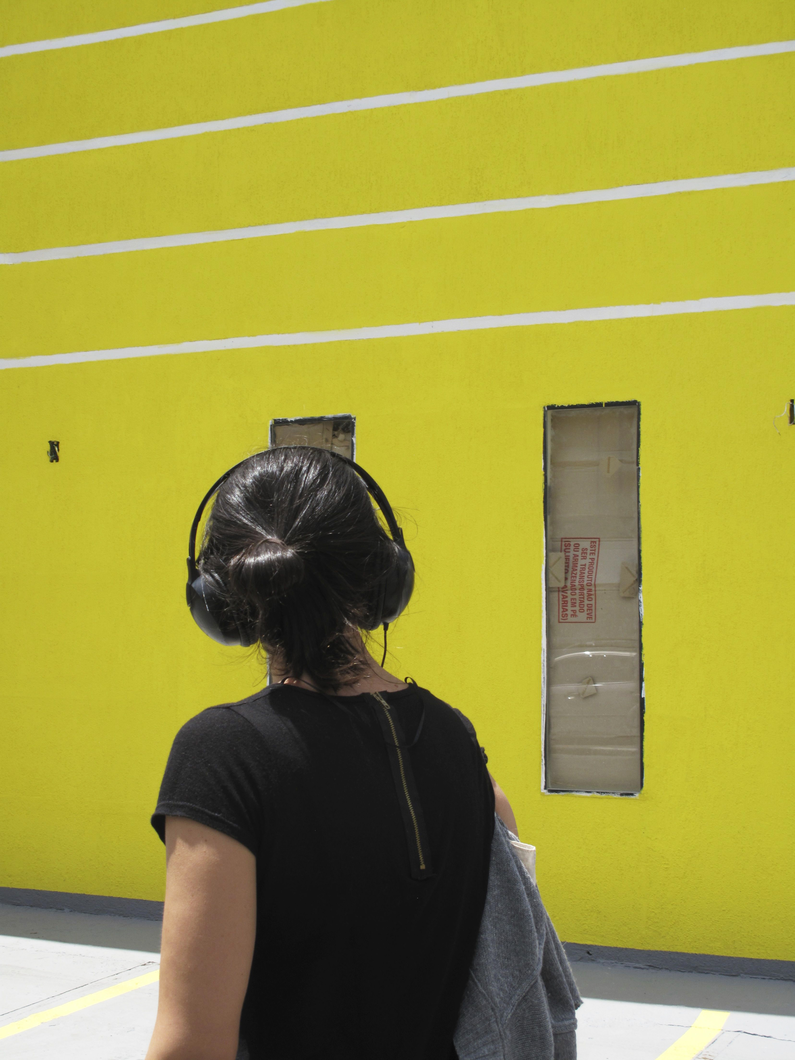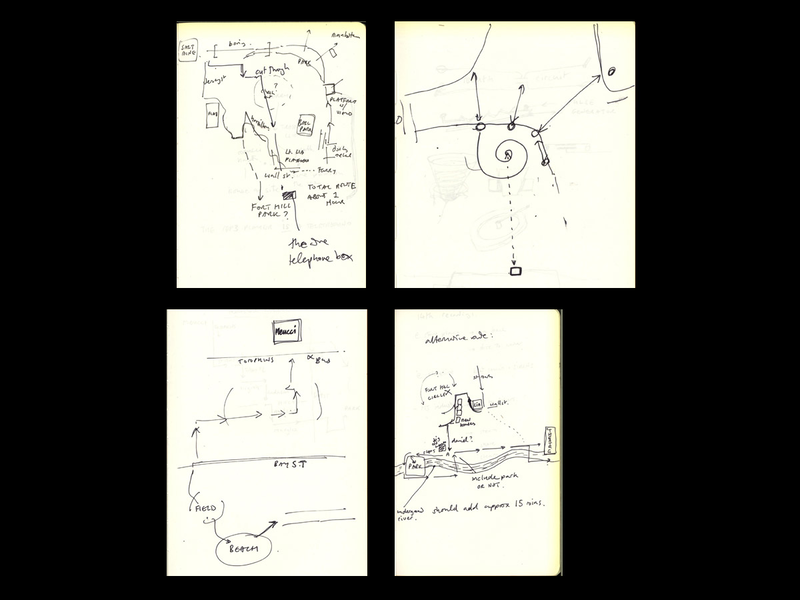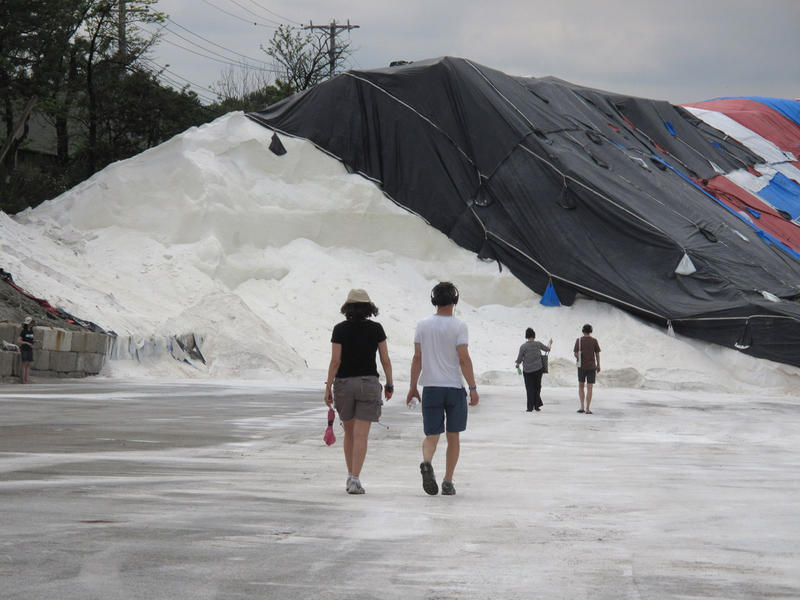Listening to / in Public Space. Introduction
"I'm lost in music, caught in a trap, no turning back, I'm lost in music." (Sister Sledge, 1979)
An "audio walk" is an experience where a listener moving through a particular place hears sounds which have been designed or composed to correspond to elements of the environment. These sounds can include speaking voices, recorded environmental sound, music and sound effects. It differs from the "Listening walk" where the walker is instructed to walk in a particular route with instructions about how to listen to their environment without the use of technology. Audio walks necessarily use audio technology to present pre-recorded or generated sounds to the walker, usually using headphones. The form is very popular and relatively "genre-free". An audio walk can take the form of a guided tour, a non-linear musical composition, a spatialised poem or a "cinematic" narrative. Artists who have used the form include Cilia Erens, Willem de Ridder, Janet Cardiff, David Helbich and Tao G. Vrhovec Sambolec. I will make a distinction between "linear" audio walks, which consist of audio files to be played back manually at particular places on a route and "locative" audio walks where the movement and position of the listener can mix between different sounds or trigger events.
As I myself make audio walks and teach students to make them, I am very invested in the form. I love the possibilities of mixing realities, of combining environmental sounds with music and of weaving narratives into the surroundings. But there is a nagging thought in the back of my head. There is a theme running through many of my audio walks of the relation of art in public space to urban development, gentrification, and both utopian and local, pragmatic politics. This engagement with the problematics of the city often lies behind the structure of the narratives and the choice of sounds that I use and I want the listener to feel implicated in these processes, to perhaps encourage their agency. But headphones can create a bubble, a sense of isolation. katrienm, an artist who works with walking in a physical and acoustic way writes:
"If we are linked, en route, into a virtual space... [the] way becomes similar to a tunnel through public space. By proceeding in this manner, we accept not only reducing our auditory-perceptual space but also weakening our relationship to our real-world surroundings since hearing is inextricably connected to one's sense of space"
By shutting the listener off from their environment with headphones, am I not actually preventing the sense of participation that I am searching for?
In this research, which has taken place in the context of the Lectorate Music, Education and Society at the Royal Conservatoire, Den Haag, I consider the role of listening, audio techniques and locative technology in shaping the conditions for this engagement of the listener with their environment. Previous audio walks will be considered in terms of their engagement with their surroundings and the methods they use to achieve this. As an exercise, previous "linear" walks are being updated and transferred to the new locative mobile application Tracks. This process will be documented to chart any formal and technical difficulties as well as insights into the form and recommendations for the further development of the Tracks platform.
Background.
My work takes many forms: performances, concert pieces, films and audiovisual installations, but the audio walk is a form that I have often returned to over the last 27 years.
My first audio walk piece, Secret City was made in 1997 for the project De Verborgen Stad at de Vleeshal, Middelburg. Previous to this I had been working on the project Cityscape. This took various forms but usually used radio broadcast to "fold" the live or recorded sound of the city back onto itself. Combining this with an interest in the Situationist technique of the "derive" and the rich history of Middelburg, I decided to make a work that felt like an audio "guided tour" of the city, but where any correspondences between the sounds, stories and the surroundings would be completely random. The idea was to disorientate the listener so that they would get lost in these layers of fiction, history and present-day reality. I found the form to be very succesful and it seemed to be popular with the audience. After this I continued working with radio in urban space, but it was not until 2001 that I returned to the form of the walk. Commissioned by Stroom Den Haag, Rumours / Resonances was presented as part of an exhibition You'll never walk alone, which marked the beginning of a collection of audio walks for Den Haag made by various artists.
In the same year, I collaborated with audio walk pioneer Cilia Erens on a project around the sonic perception of blind people (Blind Date in Shanghai) which used audio-walk techniques in an indoor, theatrical setting. Shortly after this I met the theatre director Renate Zentschnig who was interested in working on a documentary audio walk with stories and sound. We collaborated on an audio guide for the former NDSM shipyard in Amsterdam, the first of a number of collaborative walk pieces, mostly documentary in nature. Another collaborative audio walk was Telettrofono on Staten Island, NY made with the poet Matthea Harvey. Although these collaborations have been an important part of my practice, in this research I will mostly focus on solo works to make it easier to think the relationships between text, sound, music and surroundings.
I have collected a number of audio walks in this exposition. The original audio files are included along with the scripts, maps and images, where available, to give some context. Each piece is documented in a different visual form depending on the materials and the content. In addition I include written notes about my re-listening to some of these pieces. In revisiting these previous audio walks, I'm particularly listening for ways that I negotiated the boundaries between music and ambient sound, how sounds were linked to the narrative context and the walking route and how the technology was used. Sometimes binaural recording is used to create a hyper-realistic externalized sound world, sometimes I play with malfunctioning technology or the tropes of surveillance and tracking, sometimes an environmental sound slowly becomes "musical". The use of spoken instructions or a booklet with texts and images also modifies the relationship of the listener with the audio. The re-activation of some of these walks in the Tracks app will necessarily bring up questions about the role of the interface in encouraging engagement and agency.
Next: Listening with two ears.


